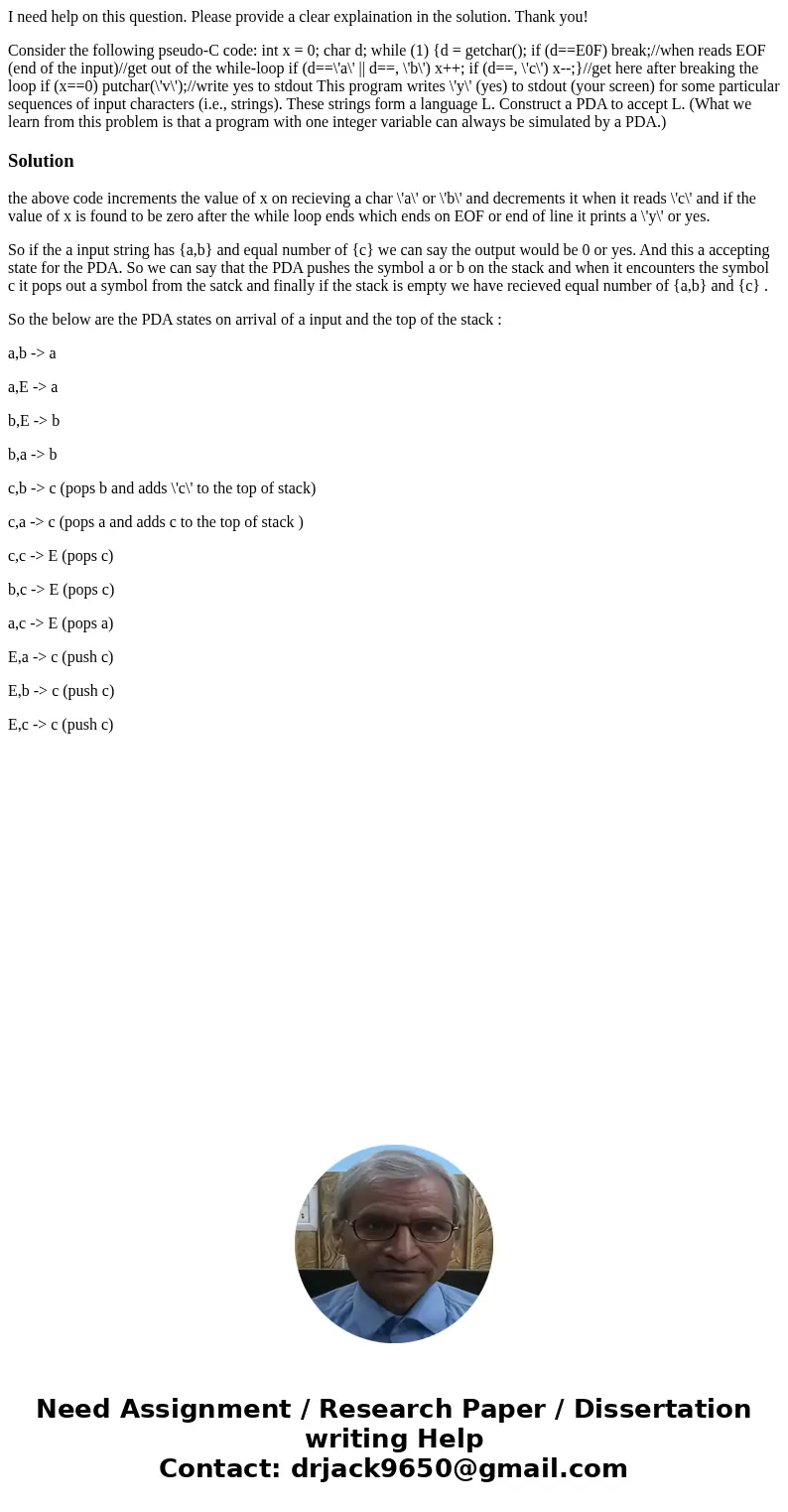I need help on this question Please provide a clear explaina
I need help on this question. Please provide a clear explaination in the solution. Thank you!
Consider the following pseudo-C code: int x = 0; char d; while (1) {d = getchar(); if (d==E0F) break;//when reads EOF (end of the input)//get out of the while-loop if (d==\'a\' || d==, \'b\') x++; if (d==, \'c\') x--;}//get here after breaking the loop if (x==0) putchar(\'v\');//write yes to stdout This program writes \'y\' (yes) to stdout (your screen) for some particular sequences of input characters (i.e., strings). These strings form a language L. Construct a PDA to accept L. (What we learn from this problem is that a program with one integer variable can always be simulated by a PDA.)Solution
the above code increments the value of x on recieving a char \'a\' or \'b\' and decrements it when it reads \'c\' and if the value of x is found to be zero after the while loop ends which ends on EOF or end of line it prints a \'y\' or yes.
So if the a input string has {a,b} and equal number of {c} we can say the output would be 0 or yes. And this a accepting state for the PDA. So we can say that the PDA pushes the symbol a or b on the stack and when it encounters the symbol c it pops out a symbol from the satck and finally if the stack is empty we have recieved equal number of {a,b} and {c} .
So the below are the PDA states on arrival of a input and the top of the stack :
a,b -> a
a,E -> a
b,E -> b
b,a -> b
c,b -> c (pops b and adds \'c\' to the top of stack)
c,a -> c (pops a and adds c to the top of stack )
c,c -> E (pops c)
b,c -> E (pops c)
a,c -> E (pops a)
E,a -> c (push c)
E,b -> c (push c)
E,c -> c (push c)

 Homework Sourse
Homework Sourse